By Robert Barr Smith
It was May 1940, and the German officer’s unit was attacking toward a village called l’Epinette, near Bethune, France. Five of his soldiers took cover behind a farmyard wall, sheltered from the fire of British rearguards covering the retreat of the British Expeditionary Force to the English Channel. Without warning, one German crumpled, the feathered tip of an arrow sticking out of his chest. From a small farm building on their flank, rifle-fire tore into the others. While he may have known that his enemy was soldiers of the Manchester Regiment, the German leader could not have known that they were led by the formidable Captain “Mad” Jack Churchill. It was Churchill’s own arrow that skewered the luckless German, while his men’s rifles accounted for the rest. However deadly, bows and arrows were surely anachronisms in modern war. They were formidable soldiers and always had been, precisely the sort of men Jack Churchill was cut out to lead.
But then, so was the bowman.
John Malcolm Thorpe Fleming Churchill—known as “Jack Churchill” to his friends, and later “Mad Jack Churchill” or “Fighting Jack”—was a professional soldier, son of an old Oxfordshire family. Born in Hong Kong, Churchill graduated from the Royal Military Academy at Sandhurst in 1926 and was commissioned in the Manchesters, a storied regiment with battle honors dating back to the 18th century. The regiment had been raised as the 63rd and 96th Regiments of Foot and had shed their blood for Britain all across the world. Forty-two battalions of Manchesters served in World War I alone.
Jack Churchill’s younger brother, Tom, also became a Manchesters officer, and in time would rise to major general, retiring in 1962. His younger brother, called Buster, opted for the Royal Navy’s Fleet Air Arm and died for his country off Malta during the fierce fighting of Operation Pedestal.
That Churchill was a free spirit was obvious from the beginning of his service, even in an army rich in such men. For example, while serving in Burma before the outbreak of World War II, he attended a course in signals at Poona in India. It might appear odd to some that Churchill took his motorcycle all the way from Rangoon to Poona, but it did not seem at all remarkable, at least to Churchill, to return the 1,500 miles from Poona to Calcutta—whence he was to take a ship for Rangoon—riding his bike. Along the way he lost a contest with a large and hostile water buffalo but returned to his unit in time to serve in the Burma Rebellion of 1930-32.
“Mad Jack Churchill” Was Always the Daredevil
Unusual hazards and difficulties never meant much to Jack Churchill. On the same motorcycle he had traveled the 500 miles through Burma from Maymyo to Rangoon, a trip substantially complicated by an absence of roads. He therefore followed the railroad line, crossing the dozens of watercourses by pushing the bike along a rail while he walked on the crossties. Everything in life was a challenge to him. Included in the challenges to which he rose was mastering the bagpipe, a peculiar attachment for an Englishman. His love affair with the pipes seems to have originated in Maymyo, where he studied under the pipe major of the Cameron Highlanders.
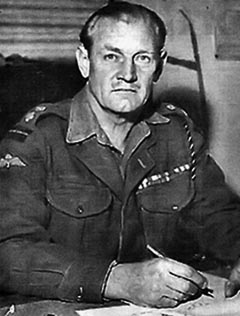
Back in England in 1932, Churchill kept on studying the pipes, but the peacetime army had begun to pale. Churchill was one of those unusual men designed to lead others in combat, and such men are often restless in time of peace. And perhaps, as his biographer commented, “certain eccentricities—brought on no doubt through frustration—such as piping the orderly officer to the Guard Room at three o’clock of a morning, and studying the wrong pre-set campaign in preparation for his promotion exam, precluded any chance of promotion for the time being and made the break, after a chat with his commanding officer, inevitable.”
When Churchill managed to get himself reprimanded for using a hot water bottle, a distinctly non-military piece of equipment, he circumvented this nicety of military protocol by substituting a piece of rubber tubing, which he filled from the nearest hot water tap. And then there was the day on which he appeared on parade carrying an umbrella, a mortal sin in any army. When asked by the battalion adjutant what he meant by such outlandish behavior, Churchill replied “because it’s raining, sir,” an answer not calculated to endear him to the frozen soul of any battalion adjutant.
Whatever the reason, after 10 years of service, Churchill resigned his commission and turned to commercial ventures. A job on the editorial staff of a Nairobi paper did not please him, and so he turned to other tasks. Among other things, he worked as a model in magazine ads and as a movie extra. He appeared in The Drum, a movie of fighting on the Northwest Frontier in which he could play the bagpipes. And because he had rowed on the River Isis, he won a cameo in A Yank At Oxford, in which he pulled the bow oar in the Oxford shell, with movie star Robert Taylor at stroke.
Meanwhile, he continued his piping and in the summer of 1938 placed second in the officers’ class of the piping championships at Aldershot. It was an extraordinary feat, since he was the only Englishman among the seventy or so competitors. During these years out of harness, Churchill practiced another skill as well—archery. He had first tried it only after returning to Britain from Burma. His expertise with the bow got him work in Sabu and The Thief of Baghdad. And with typical “Mad Jack” determination, he became so good with the bow that he shot for Britain at the world championships in Oslo in 1939.
“Back in my Red Coat”: Churchill Volunteers to Join the Finns
By then, however, the long ugly shadows of war were stretching across Europe. As the German Army smashed into Poland, Jack Churchill returned to the British Army and the Manchester Regiment, and was shipped off to France. “I was,” he said later, “back in my red coat; the country having got into a jam in my absence.” He was obviously happy to be soldiering again.
Patrolling a quiet stretch of France during the pre-blitz “sitzkrieg” of late 1939 and early 1940 did not suit a man of Churchill’s warlike temperament. And so, along with a bevy of other free spirits, including the fabulous Mike Calvert, he volunteered for the force assembling to help the Finnish Army, then under attack by the Soviet Red Army. That expedition was canceled before it could leave for Finland, and Churchill returned to the Manchesters in time to meet the German juggernaut as it crashed into Holland, Belgium, and France in May 1940. By that time, Churchill was second in command of an infantry company in the regiment’s second battalion.
During the BEF’s fighting retreat, Churchill remained aggressive, unwilling to give up a yard of ground while extracting the maximum cost from the enemy. He was especially fond of raids and counterattacks, leading small groups of picked soldiers against the advancing Germans. He presented a strange, almost medieval figure at the head of his men, carrying not only his war bow and arrows, but his sword as well.
Jack Churchill: World War II Warrior
As befitted his love of things Scottish, Jack Churchill carried the basket-hilted claymore (technically a claybeg, the true claymore being an enormous two-handed sword). Later on, asked by a general who awarded him a decoration why he carried a sword in action, Churchill is said to have answered: “In my opinion, sir, any officer who goes into action without his sword is improperly dressed.”
The war-diary of 4th Infantry Brigade, to which Churchill’s battalion belonged, commented on this extraordinary figure. “One of the most reassuring sights of the embarkation [from Dunkirk] was the sight of Captain Churchill passing down the beach with his bows and arrows. His high example and his great work … were a great help to the 4th Infantry Brigade.”
During the retreat, Churchill took command of his company when his company commander was wounded, and it was during this fighting that he spitted his hapless German soldier with, as the chronicles of Henry V’s wars would put it, “a cloth-yard shaft.” One of his brother officers, an old friend, saw him about that time chugging across the Flanders plain on a small motorcycle, his bow tied to the frame, arrows sticking out of one of the panniers on the back, a German officer’s cap hanging on the headlight. “Ah!” said Churchill, spotting his friend, “Hullo Clark! Got anything to drink?”
Once Churchill had dismounted, his friend noticed dried blood smeared across one ear and asked Churchill about the injury. German machine gun, said Churchill casually. His men had shouted at him to run but, he said, he was simply too tired. He won his first Military Cross during the retreat to the Channel, when he hitched six trucks together to salvage a disabled British tank; although in the end he could not save the tank, he did rescue a wounded British officer.
His close call did not seem to impress Churchill in the least. Then and afterward, he seemed to be one of those extraordinary men who thrive on danger and fear it not at all. Some fellow soldiers are said to have called him “Mad Jack,” and the nickname was not altogether undeserved.
Becoming a Commando
Churchill made it to Dunkirk, allegedly by bicycle, his bow and arrows hanging from the frame. From that terrible beach he was lifted back to England—so was his Manchester friend—courtesy of the gallantry of the Royal Navy and a horde of civilian boats and ships, and it was there he heard of a new organization being formed. It sounded like precisely the sort of outfit Churchill was cut out for. Requests for volunteers for this new duty were somewhat vague, but they promised aggressive service at least, and that was good enough for Churchill. Whatever a commando was, he would be one.
His training in Scotland produced an unexpected dividend for Churchill. There he met Rosamund Denny, the daughter of a Scottish ship building baronet. They were married in Dumbarton in the spring of 1941, a happy marriage that would produce two children and last until Churchill’s death 55 years later.
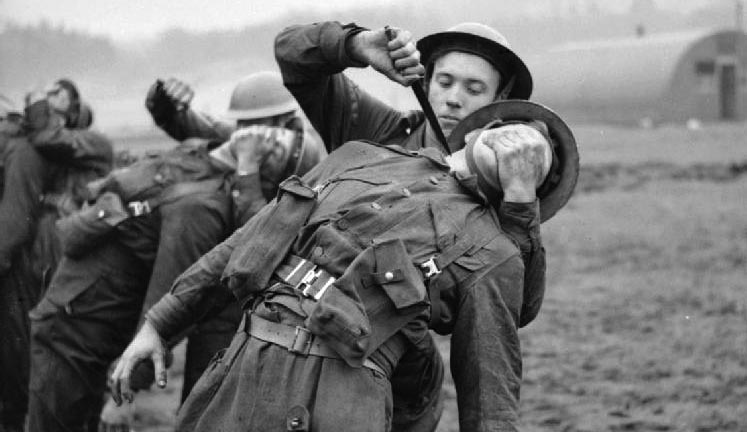
Churchill took to Commando operations like a duck to water, including the icy water of Scottish lochs. He was at home on the steep hills, in the rain and the mud. He lived and breathed training, leading, driving, setting the example, praising excellence, and damning sloth and carelessness. His ad hoc lectures to his soldiers were couched in the plain language his men understood and liked, for instance: “There’s nothing worse than sitting on your bum bottom doing nothing just because the enemy happens to leave you alone for a moment while he has a go at the unit on your flank. Pitch in and support your neighbor any way you can.… ”
Sword and Pipes Always At-Hand
There was also a bit of a downside to Jack Churchill. On those happy occasions when the Commandos were not in the field at night, he was sometimes given to awakening everybody in the billet hotel at Largs, Scotland, shattering the night with pipe music. No piper could possibly understand why some of the world would rather sleep than listen to martial piping however expert, and he was no exception. His comrades could only grit their teeth and hope that he would soon tire or think of something else quieter to do.
The Commandos’ eternal training ended on December 27, 1941, with the brilliantly successful assault on the German garrison at Vaagso, the Norwegian town on Nord Fiord. Churchill commanded two companies in the attack, charged with taking out the German shore batteries on Maaloy Island, which lay in the fiord opposite Vaagso town. In vintage Mad Jack fashion, he stood in the lead landing craft as it forged in toward the shore, his pipes screaming The March of the Cameron Men.
He then waded ashore at the head of his men, sword in hand, and charged ahead, as one account put it, “into the thick smoke, uttering warlike cries.” Maaloy and its battery fell quickly. Churchill and his men killed or took prisoner the garrison, including two women who, as one account of the raid genteelly put it, “might be described as camp followers.” While heavy fighting continued for a while in Vaagso itself, the landing force would not be troubled by the cannon of Maaloy. Jack Churchill’s signal to the raid commander was terse: “Maaloy battery and island captured. Casualties slight. Demolitions in progress. Churchill.”
Earning His Second Military Cross
The Commandos had stung the Germans badly. In time the Norwegian garrisons would be heavily reinforced with troops critically required elsewhere. The German garrison at Vaagso had ceased to exist, and the raiders took back with them some 100 prisoners and about 70 volunteers for the free Norwegian forces. The expedition had also sunk about 15,000 tons of shipping and destroyed not only docks and warehouses but the vital fish oil plants so important to German ammunition production and to dietary supplements for the German armed forces. And German troops near any coastline would not sleep quite as well as they had before Vaagso.
As the raiders prepared to leave Vaagso and Maaloy, a British demolition charge exploded so close to Churchill that it “blew him up,” in the words of one account. Another story says that a demolitions man “thoughtlessly blew down a wall he happened to be leaning against.” Still another version, which sounds eminently Churchillian, relates he was celebrating the raid’s success with a bit of liberated Moselle wine when the charge went off and a chunk of broken bottle slashed into Churchill’s forehead.
Whatever happened, Churchill had another wound—or at least a sort of wound—to show for his successful leadership at Maaloy. As he himself joked later, “I had to touch it up from time to time with Rosamund’s lipstick to keep the wounded hero story going.” He also had his second Military Cross.
“Commando!”
Commanding Number 2 Commando in the autumn of 1943, Jack Churchill won the Distinguished Service Order for an astonishing exploit during the Salerno landings. Ashore in command of No. 2 Commando (also present were some other Churchills—his brother Tom and Captain Randolph, son of the Prime Minister), Churchill led his men in heavy and confused fighting around the town of Marina. Their mission was to destroy German ability to place artillery fire on the western half of the Bay of Salerno. Churchill directed the final counterattack, which broke the last German attempt to destroy the Commando beachhead.
During the ferocious Salerno fighting, Number 2 Commando found itself fighting as line infantry, as did its American counterparts, the Rangers, in a role for which neither Commandos nor Rangers were designed. Casualties were heavy, but the Commandos beat back every German attack. For Churchill, the high point of the fighting was the night attack on a town called Piegoletti (sometimes Piegolelli). He organized his men into six parallel columns and, since the heavy undergrowth ruled out any chance of a silent advance, sent them charging through the darkness shouting “commando!” The yelling not only minimized the risk of Commandos shooting each other in the gloom, but also confused the German defenders, to whom this fierce shouting seemed to come from all directions in the blackness of the night. The attack carried all its objectives and bagged 136 prisoners.
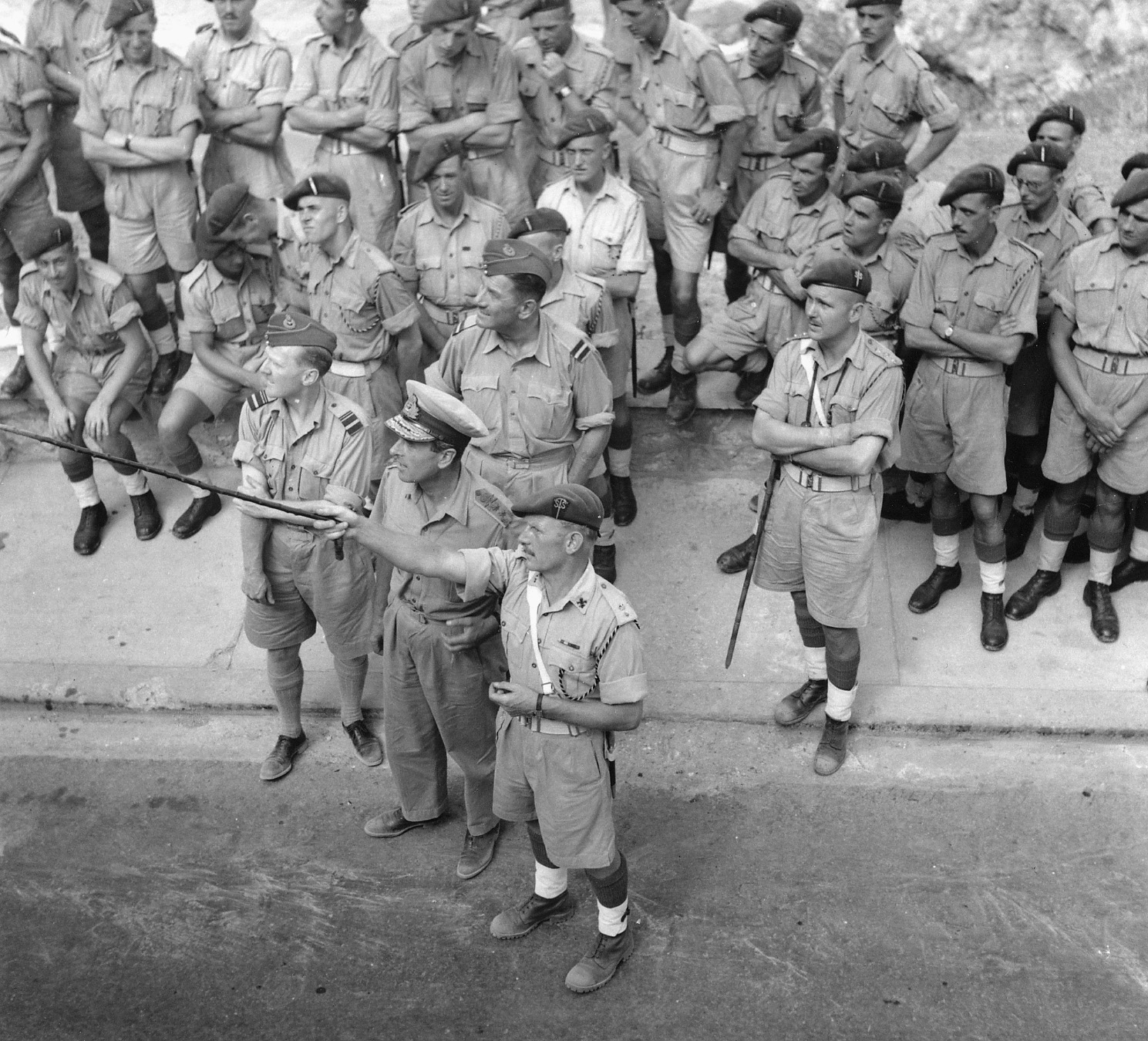
“A Bit Errol Flynn-ish”
Churchill himself was far in front of his troopers. Sword in hand, accompanied only by a corporal named Ruffell, he advanced into the town itself. Undiscovered by the enemy, he and Ruffell heard German soldiers digging in all around them in the gloom. The glow of a cigarette in the darkness told them the location of a German sentry post. What followed, even Churchill later admitted, was “a bit Errol Flynn-ish.”
The first German sentry post, manned by two men, was taken in silence. Jack Churchill, his sword blade gleaming in the night, appeared like a demon from the darkness, ordered “Haende hoch!” and got results. He gave one German prisoner to Ruffell, then slipped his revolver lanyard around the second sentry’s neck and led him off to make the rounds of the other guards. Each post, lulled into a sense of security by the voice of their captive comrade, surrendered to this fearsome apparition with the ferocious mustache and the naked sword.
Altogether, Churchill and Corporal Ruffell collected 42 prisoners, complete with their personal weapons and a mortar they were manning in the village. Churchill and his claymore took the surrender of ten men in a bunch around the mortar. He and his NCO then marched the whole lot back into the British lines.
Mad Jack to the Adriatic
As Churchill himself described the event, it all sounded rather routine: “I always bring my prisoners back with their weapons; it weighs them down. I just took their rifle bolts out and put them in a sack, which one of the prisoners carried. [They] also carried the mortar and all the bombs they could carry and also pulled a farm cart with five wounded in it….I maintain that, as long as you tell a German loudly and clearly what to do, if you are senior to him he will cry ‘Jawohl’ and get on with it enthusiastically and efficiently whatever the … situation. That’s why they make such marvelous soldiers…”
Churchill’s next assignment took him to the Adriatic, where British units and Tito’s Yugoslav partisan forces struck at the German garrisons along the Dalmatian coast. In January 1944, Churchill, leading No. 2 Commando, about 1,000 Yugoslav partisans, and some antiaircraft and machine gun attachments became commandant of the island of Vis, the last Dalmation island not in German hands. From Vis, the campaign against the German-held Adriatic islands was carried on at sea by the Royal Air Force and by small boats of the Royal Navy. Ever ready for raids and excursions, Churchill sent some of his Commandos along with the Navy as boarding parties, to swarm over the side of any ship carrying supplies to the enemy.
Small groups of Commandos also landed by night to harass the German garrisons on other Dalmatian islands. The commander of one such party, Lieutenant B.J. Barton, discovered that the German commandant on the island of Brac was much given to mistreatment of the island population. Barton, disguised as a Yugoslav shepherd, hid his Sten gun in pieces inside a load of wood on a donkey, slipped into the German headquarters village, erased the commandant, and got away clean.
Churchill’s Luck at Last Run Out
A series of successful raids by Commandos and partisans hurt the Germans, and in May 1944, a more ambitious attack by British and Yugoslav personnel was planned on the German-held Yugoslav island of Brac. It was here that Jack Churchill’s amazing luck at last ran out. The operation required attacks on three separate hilltop positions, dug in, mutually supporting, protected by wire and mines, and covered by artillery. Several Allied forces would have to work in cooperation. One of these, a reinforced Commando unit plus a large contingent of partisans, Jack Churchill would lead himself.
While partisan attacks on the main German position got nowhere, 43 (Royal Marine) Commando went to the attack on the vital hill called Point 622. Pushing ahead in clear moonlight through wire and minefields, 43 Commando carried the hilltop but was forced to fall back with heavy casualties. Churchill now sent 40 Commando—also Royal Marines—in against the hill, and led them himself, playing the pipes. The leading troop went in yelling, shooting from the hip, and overran the German positions on 622.
But between casualties on the way up the hill and more casualties from very heavy German fire on the top, Churchill quickly found himself isolated with only a handful of defenders around him. There were only six Commandos on the hilltop, and three of those were wounded, two of them very badly. “I was distressed,” said Churchill with memorable understatement, “to find that everyone was armed with revolvers except myself, who had an American carbine.”
Still, the little party fought on until the revolver ammunition was gone and Churchill was down to a single magazine for his carbine. A German mortar round killed three of his little party and wounded still another, leaving Churchill as the only unwounded defender on the hilltop. It was the end. Churchill turned to his pipes, playing “Will ye no come back again” until German grenades burst in his position and he was stunned by a fragment from one of them. He regained consciousness to discover German soldiers “prodding us, apparently to discover who was alive.”
Long after the end of the war, Churchill was pleased to hear that the German account of the fighting for the hill described his lonely piping as “the doleful sound of an unknown musical instrument.”
Narrowly Escaping the Gestapo
Jack Churchill would play his pipes one more time, at the funeral of 14 Commandos who died on the slopes of Hill 622. He and his surviving men escaped killing by the Gestapo under Hitler’s foul “commando order” through the chivalry of one Captain Thuener of the Wehrmacht. “You are a soldier, as I am,” the captain told Churchill. “I refuse to allow these civilian butchers to deal with you. I shall say nothing of having received this order.” After the war, Churchill was able to personally thank Thuener for his decency and to help him stay out of the merciless hands of the Russians.
Churchill was flown to Sarajevo and then on to Berlin, there apparently being some thought that he was a relative of Winston Churchill. There is also a story that on leaving the aircraft, he left behind a burning match or candle in a pile of paper, producing a fire and considerable confusion. During the inquiry that followed, Churchill innocently told a furious Luftwaffe officer that the army officer escorting Churchill had been smoking and reading the paper on board the aircraft.
Churchill spent some time in solitary confinement, and in time he ended up in Sachsenhausen concentration camp. That infamous prison was only one more challenge to Churchill, however, and in September 1944, he and an RAF officer crawled under the wire through an abandoned drain and set out to walk to the Baltic coast. Their luck was not in, however, and they were recaptured near the coastal city of Rostock, only a few miles from the sea. In time, they were moved to a camp at Niederdorf, Austria.
Here, Churchill watched for another opportunity to escape, keeping a small rusty can and some onions hidden in his jacket in case a sudden opportunity should present itself. On an April night in 1945, it did. The chance came when the camp’s lighting system failed. Churchill seized the moment and walked away from a work detail, disappearing into the darkness and heading for the Alps and the Italian frontier. Liberating vegetables from Austrian gardens and cooking them in his tin can, he walked steadily south. Keeping off the roads, he crossed the Brenner Pass into Italy and headed for Verona, some 150 miles away.
Hitching a Ride With the Americans
On the eighth day of his escape, hobbling along on a sprained ankle, Churchill caught sight of a column of armored vehicles. To his delight, their hulls carried the unmistakable white star of the United States Army. He managed to flag down one vehicle and persuade the crew that in spite of his scruffy appearance he was indeed a British colonel. As he later told his old friend and biographer, Rex King-Clark, “I couldn’t walk very well and was so out of breath I could scarcely talk, but I still managed a credible Sandhurst salute, which may have done the trick.”
Churchill was free but frustrated. The European war was almost over, and he had missed much of it, including the chance for further promotion and perhaps the opportunity to lead a Commando brigade. Nevertheless, hope sprang eternal. “However,” he said to friends, “there are still the Nips, aren’t there?”
There were. And so Churchill was off to Burma, where the largest land war against Japan was still raging. Here, too, however, he met frustration, for by the time he reached India, Hiroshima and Nagasaki had disappeared in mushroom clouds, and the war abruptly ended. For a warrior like Churchill, the end of the fighting was bittersweet. “You know,” he said to a friend only half joking, “if it hadn’t been for those damned Yanks we could have kept the war going for another 10 years.”
The abrupt departure of Japan from the war was a distinct disappointment to Churchill, especially since he had risen to command of a Commando brigade in the Far East. Still, there were other brushfire wars still smoldering, and in November 1945, he reported home from Hong Kong, “As the Nips have double-crossed me by packing up, I’m about to join the team v the Indonesians,” who were by then casting covetous eyes on Sarawak, Borneo, and Brunei. British and Commonwealth troops killed or expelled the invaders, but Jack missed this little war as well.
By the next year, he had transferred to the Seaforth Highlanders and was looking forward to jump school, where, at 40, he qualified as a paratrooper. He took a little time off in 1946, this time for the movies. Twentieth Century Fox was making Ivanhoe with Churchill’s old rowing companion Robert Taylor and wanted him to appear as an archer, firing from the wall of Warwick Castle. Churchill took the assignment, flown off to the job in an aircraft provided by the movie company.
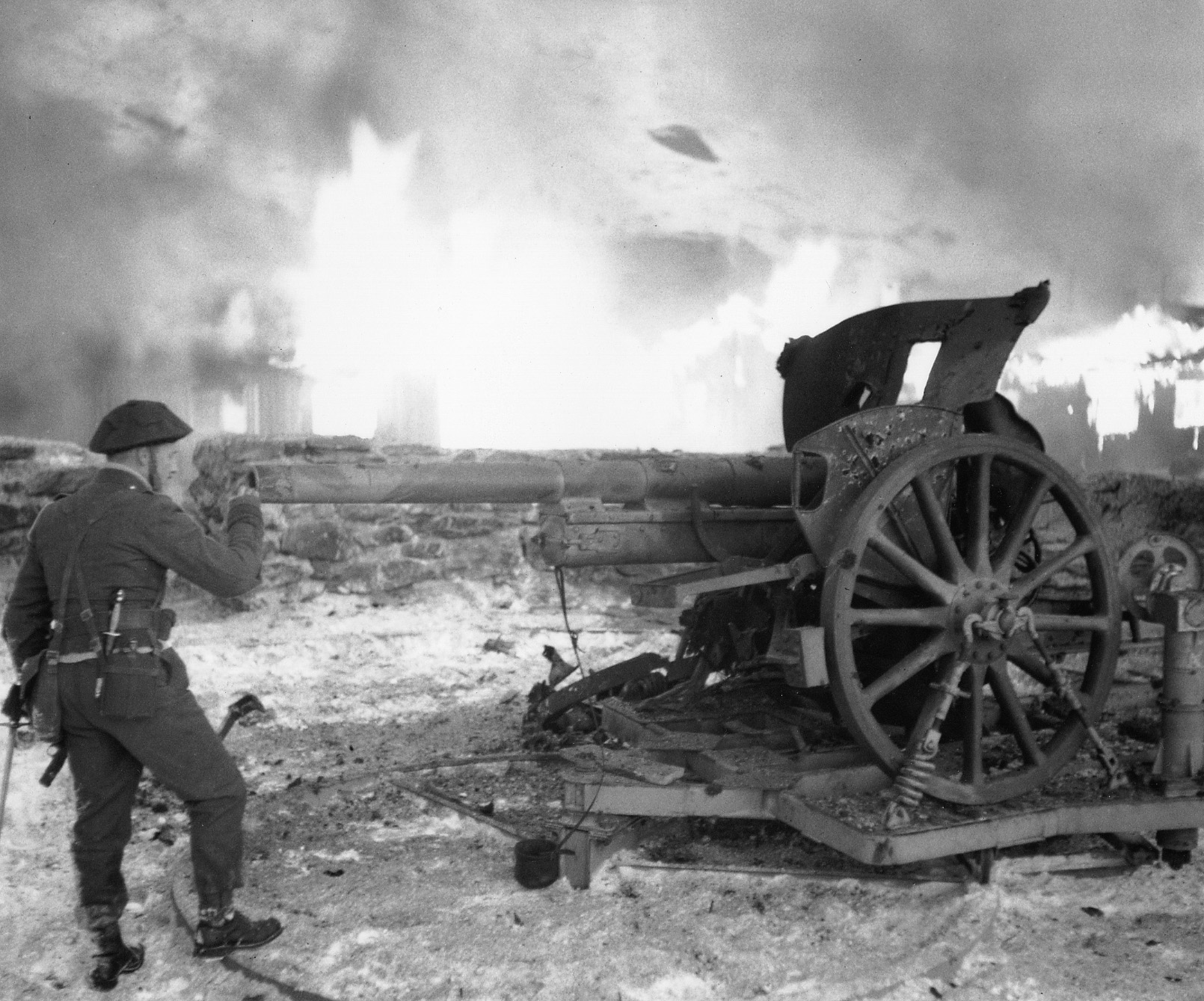
Through With War? …Not for Mad Jack
Though Jack Churchill might have thought that he was through with war, he was not. After World War II ended, he qualified as a parachutist, transferred to the Seaforth Highlanders, and later ended up in Palestine as second-in-command of 1st Battalion, the Highland Light Infantry. And it was there, in the spring of 1948, just before the end of the British mandate over that troubled land, that he again risked his life for other people.
Those were dangerous days, with much blood—Jewish, Arab and British—shed by Arab terrorists and by Jewish radicals, notably the so-called Stern Gang. On a day in May a Jewish medical convoy—ambulances, trucks, and buses—was ambushed by Arabs on a narrow street in Jerusalem, not far from a small HLI detachment at a place called Tony’s Post. Churchill rushed to the site in a Dingo, a small armored car. This one had its turret removed for repair, but it gave him a semblance of protection at least.
Accurately assessing the potential for mass murder by the Arab terrorists, he radioed for two Staghounds, heavy cannon-armed armored cars, and these were diverted from convoy protection and dispatched to him. It would take time for the armored cars to reach him, however, and while they were on their way, Churchill acted. He drove down to the beleaguered convoy in a large armored personnel carrier covered by the only escort available, an open-topped Bren gun carrier and a small police armored car armed with a machine gun. Leaving his tiny convoy and swinging a walking stick, he walked calmly into the open and down the road to the convoy.
Marching into the teeth of the battle around the convoy, he must have been quite a sight. Since he had just come from a battalion parade, he was resplendent in full dress: kilt, glengarry bonnet, red-and-white diced stockings, Sam Browne belt, and white spats. And as usual he later made light of this extraordinary cold courage: “I grinned like mad from side to side,” he said afterward, “as people are less likely to shoot at you if you smile at them … [that] outfit in the middle of the battle, together with my grinning at them, may have made the Arabs laugh because most of them have a sense of humor. Anyway, they didn’t shoot me!”
Churchill spoke to the occupants of one bus and offered to drive his big armored personnel carrier down to the convoy and make as many trips as necessary to evacuate the patients and their medical personnel. He warned those at the convoy that there might be casualties when they moved to the British vehicle, and one of the Jews asked whether he would not first drive off the Arabs. He patiently explained that he could not; there were hundreds of Arabs and he had only 12 men.
After a discussion with one of the doctors, as Churchill stood in the open, his offer was refused. “Thank you very much but we do not want your help. The Haganah (the Jewish defense force) will save us.” Churchill walked down the convoy repeating his offer, but was uniformly refused. By now one of Churchill’s men had been mortally wounded, and he ran back to his vehicles and sent them out of harm’s way. Returning to Tony’s Post, he supported the Jewish convoy with small arms fire until Arab gasoline bombs and rifle fire destroyed the Jewish vehicles and most of their passengers. The Haganah had not arrived to save them after all, and 77 Jews died in the narrow street.
Evacuating 700 Jews from Jerusalem
Later, Churchill engineered the evacuation of some 700 Jews—patients, staff, and students—from the university and hospital atop Jerusalem’s Mount Scopus. Churchill made an early run up Scopus in his jeep accompanied by Eli Davis, the deputy medical director of the hospital.
Here is how Davis later told the story: “Major Churchill told me there was slight chance of getting through … because the Arabs saw the British meant business. He agreed to make the trip up to Scopus and invited me along. The Major took a Jeep and his driver. I sat while he stood in the Jeep twirling his stick. He looked as though he were on parade in London…”
Jack Churchill never changed, never lost his flair for the unusual, not to say the flamboyant. In his later years, passengers on a London commuter train were often startled by seeing an older male passenger rise, open a window, and hurl his briefcase out into the night. The passenger would then leave the car and wait by the train’s door until it stopped at the next station. It was Churchill, of course, enjoying his little gesture and reasonably sure that his fellow passengers could not know he had thrown the case into the garden of his house. It saved him carrying it home from the station.
Mad Jack Finally Retires
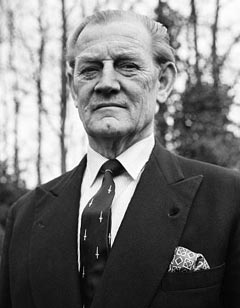
In later years, Churchill served as an instructor at the land-air warfare school in Australia, where he became a passionate devotee of the surfboard. Back in England, he was the first man to ride the Severn River’s five-foot tidal bore and designed his own board. He finally retired from the army, with two awards of the Distinguished Service Order, in 1959. He went right on working, now as a Ministry of Defense civilian overseeing the training of Cadet Force youngsters in the London District. One of his old friends wrote later that Churchill liked the job not only because of his association with the enthusiastic cadets, but also because the job gave him an office in Horse Guards at Whitehall, and a window from which he could watch troopers of the Household Cavalry mounting guard in a courtyard below him. He was older now, but still the warrior.
Churchill and his wife Rosamund could spend more time together now, and they used part of it sailing coal-fired steam launches on the Thames River between Oxford and Richmond, Churchill decked out in an impeccable yachting cap and Rosamund giving appropriate sailing orders to her husband. Churchill was also well known for his intricate and accurate radio-controlled models of ships, mostly warships of course, all so carefully engineered and built that they were much sought after by collectors.
Churchill passed away peacefully at his home in Surrey in the spring of 1996, but he left a legacy of daring that survives to this day. One respected publication dealing with the Commandos features large color drawings of Commando uniforms, insignia, and weaponry—and one of the illustrations is of Mad Jack Churchill, complete with claymore.
“Mad” Jack Churchill was one of that rare and happy breed for whom war is their element. That does not mean that he did not hate the suffering that war caused; it was simply that he thrived on the excitement and relished the chance to achieve and excel. His whole philosophy was pretty well summed up by a couplet he scribbled on a postcard he sent to a friend, a card whose face bore the regimental colors: “No Prince or Lord has tomb so proud / As he whose flag becomes his shroud.”
He might have been describing himself.
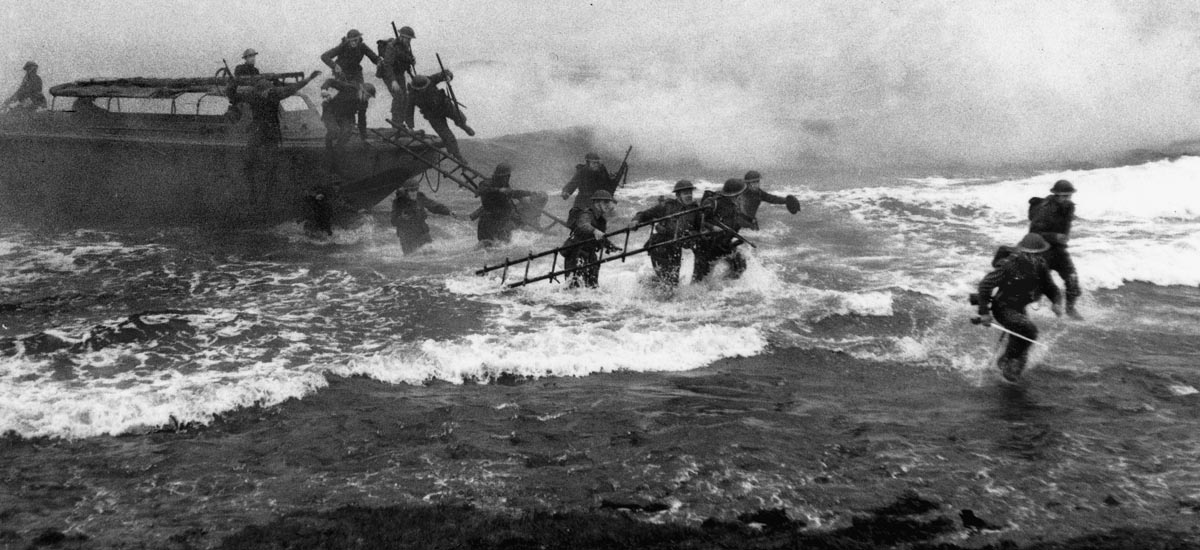
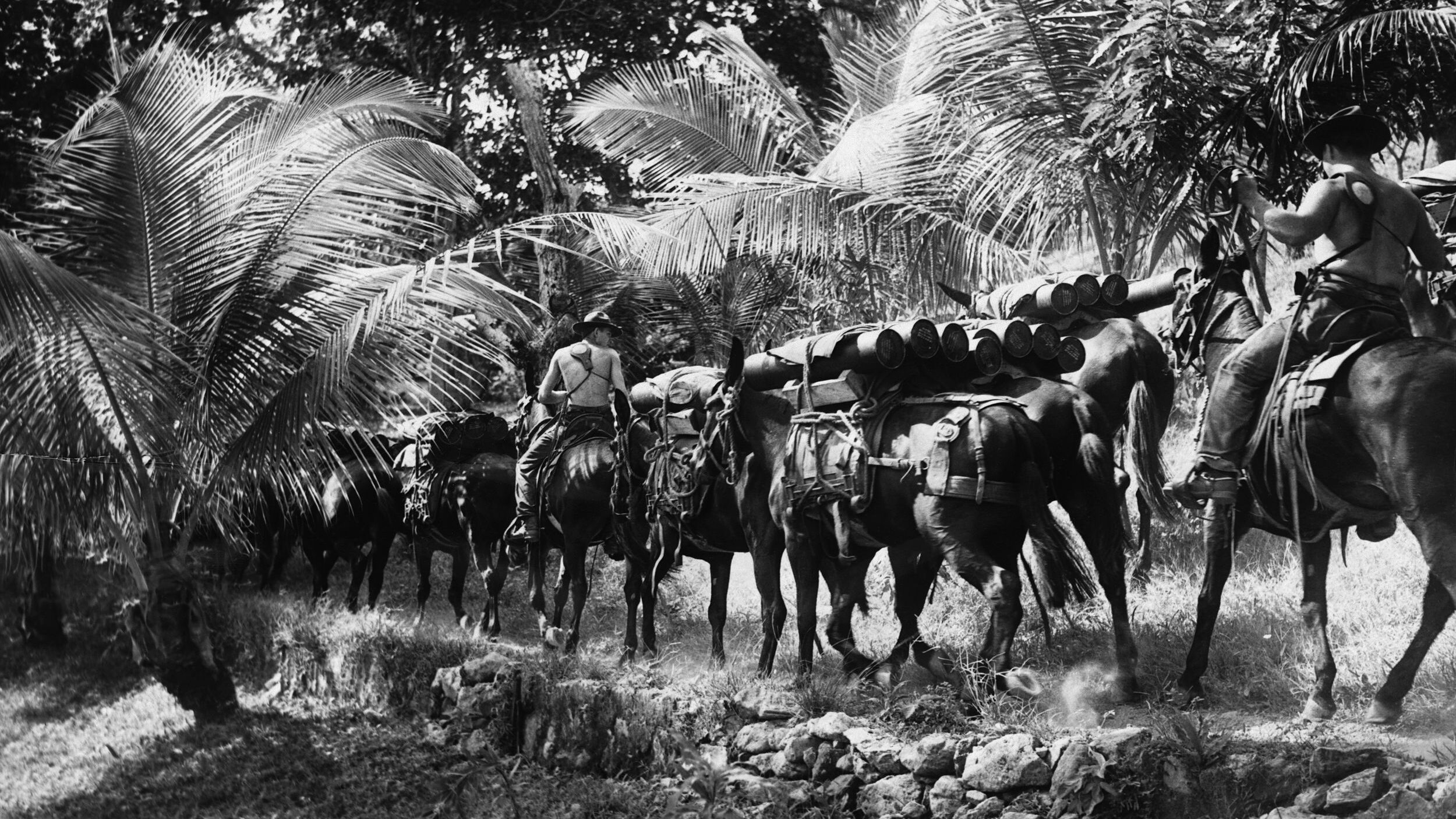
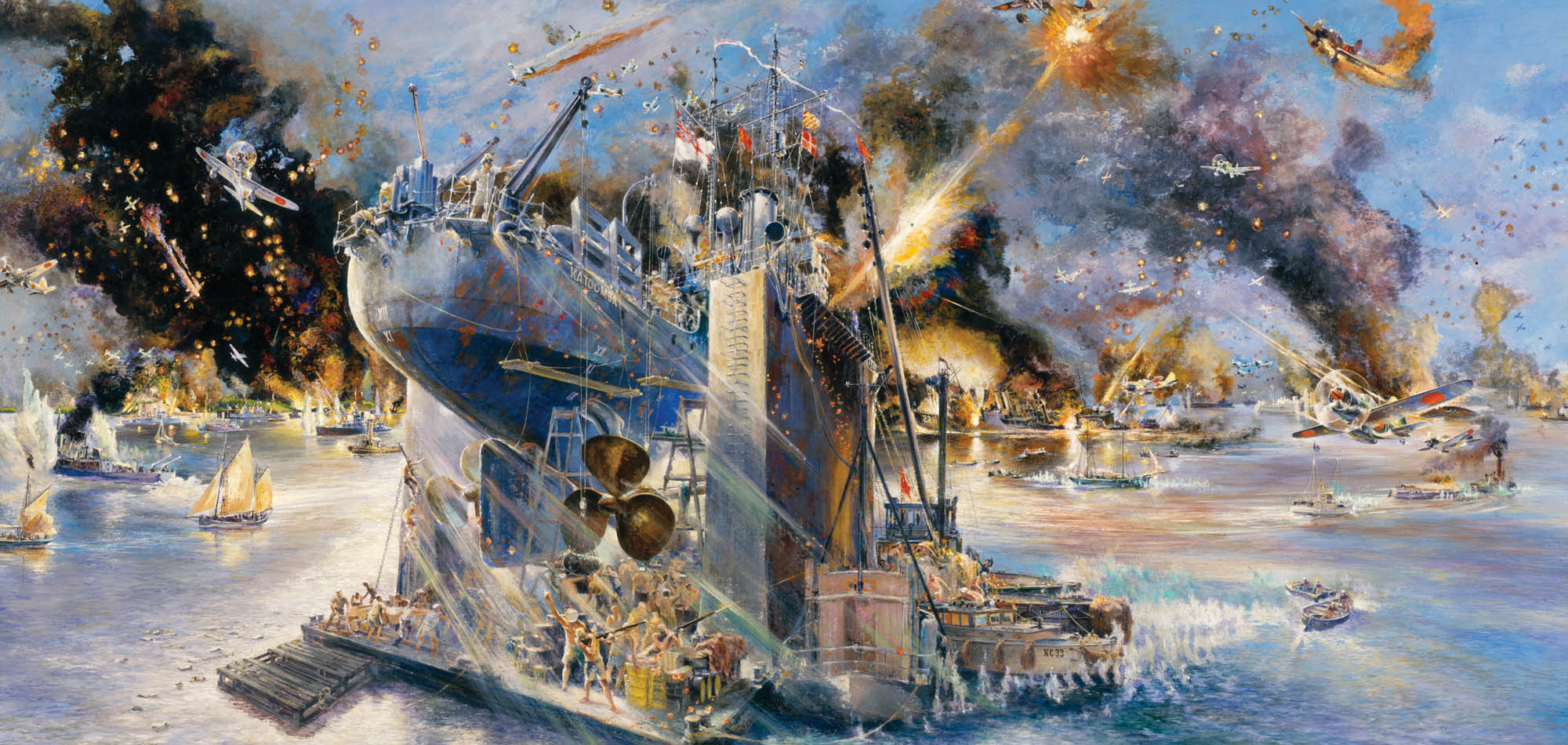
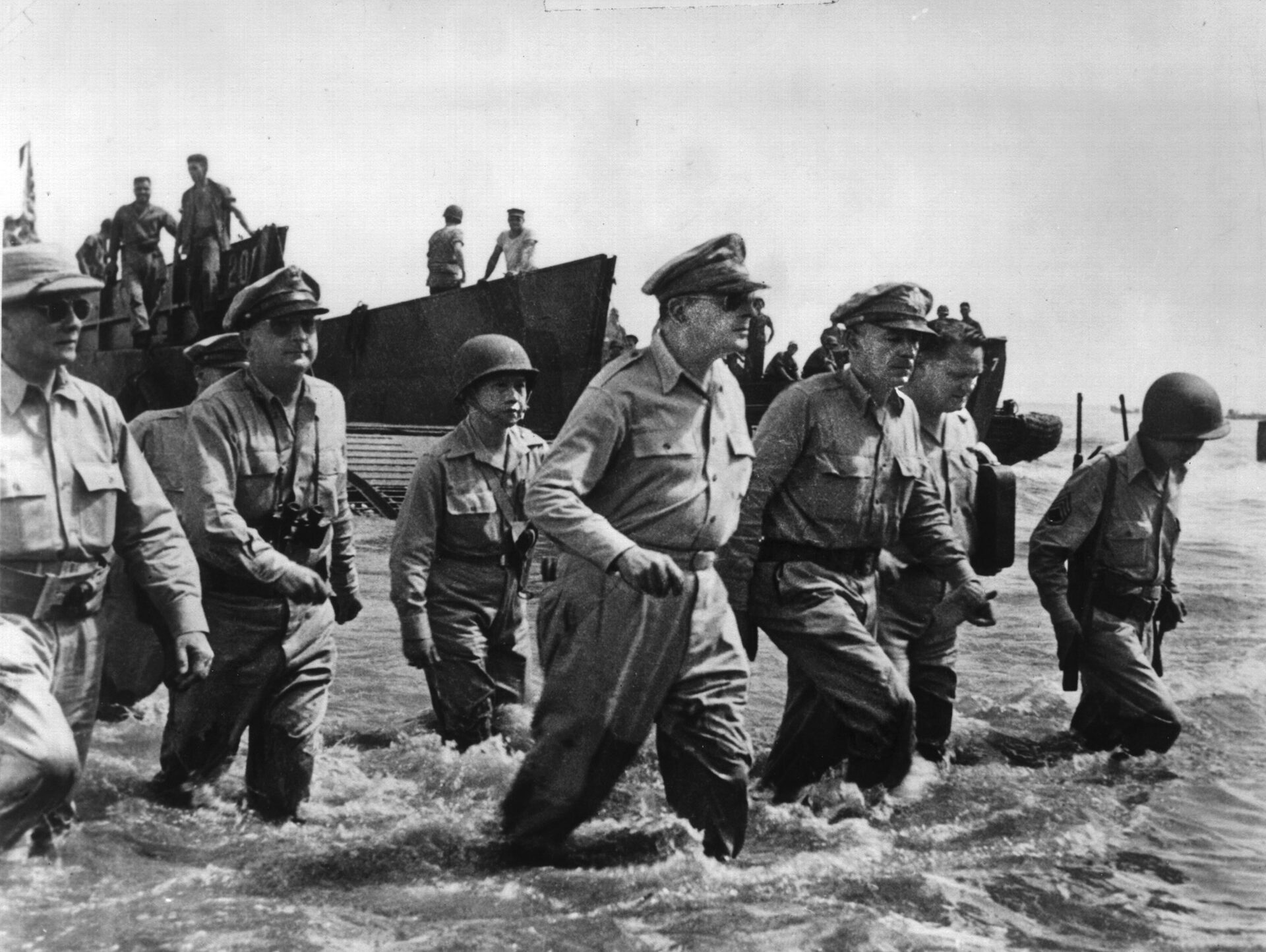
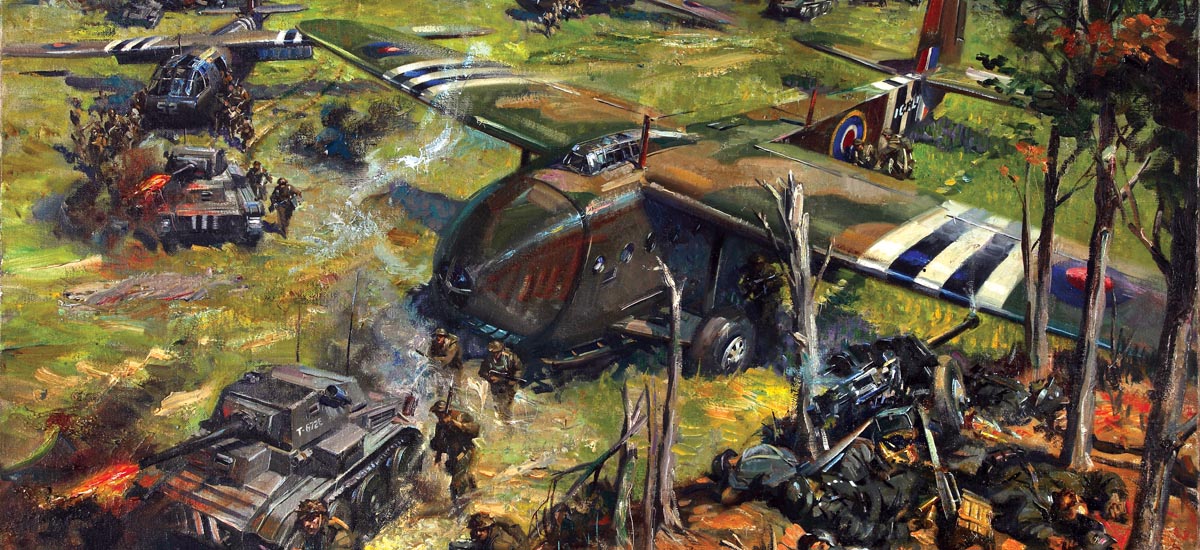
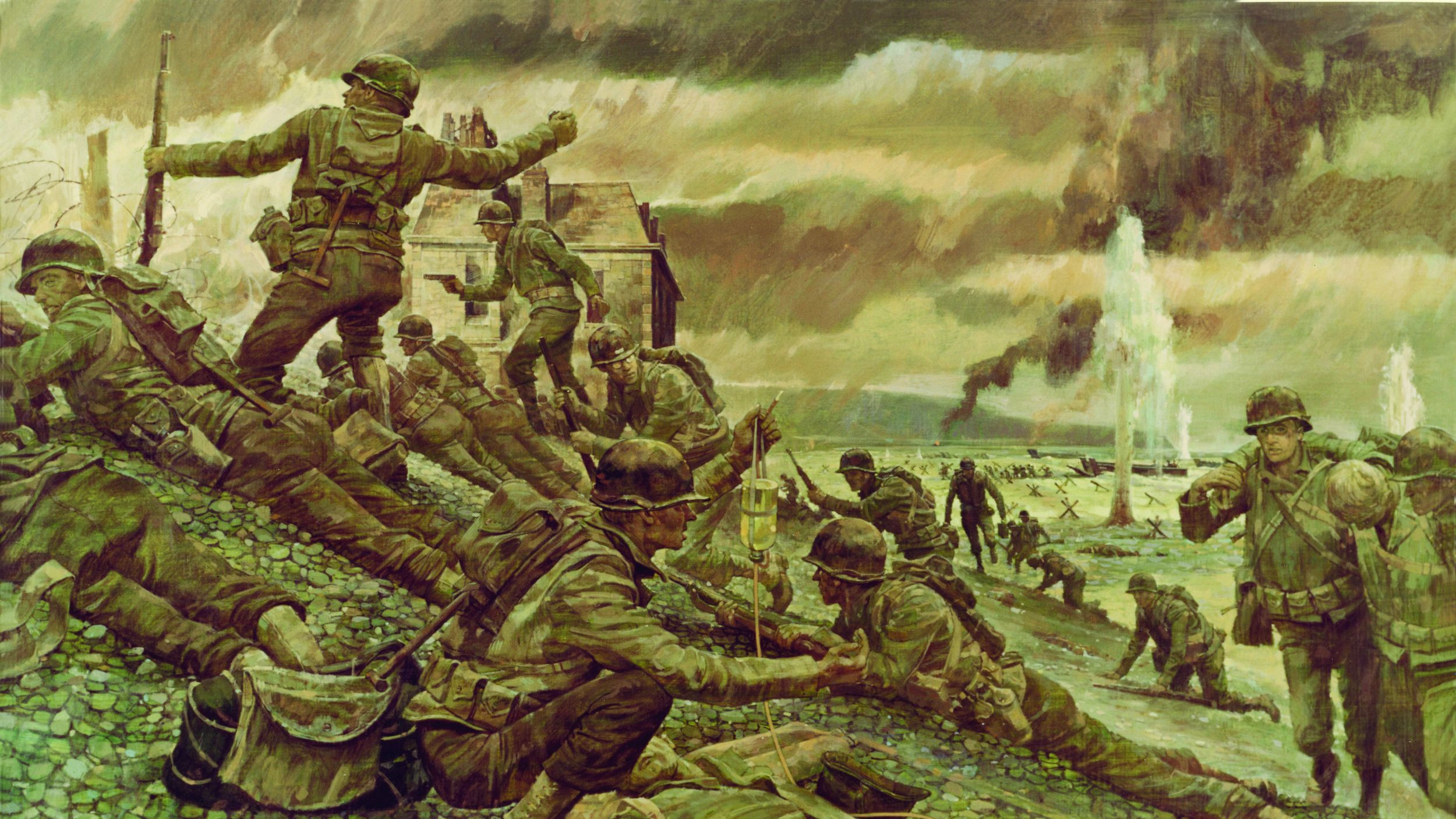
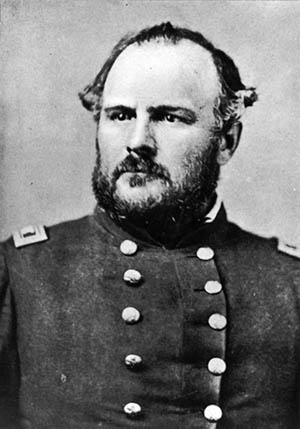
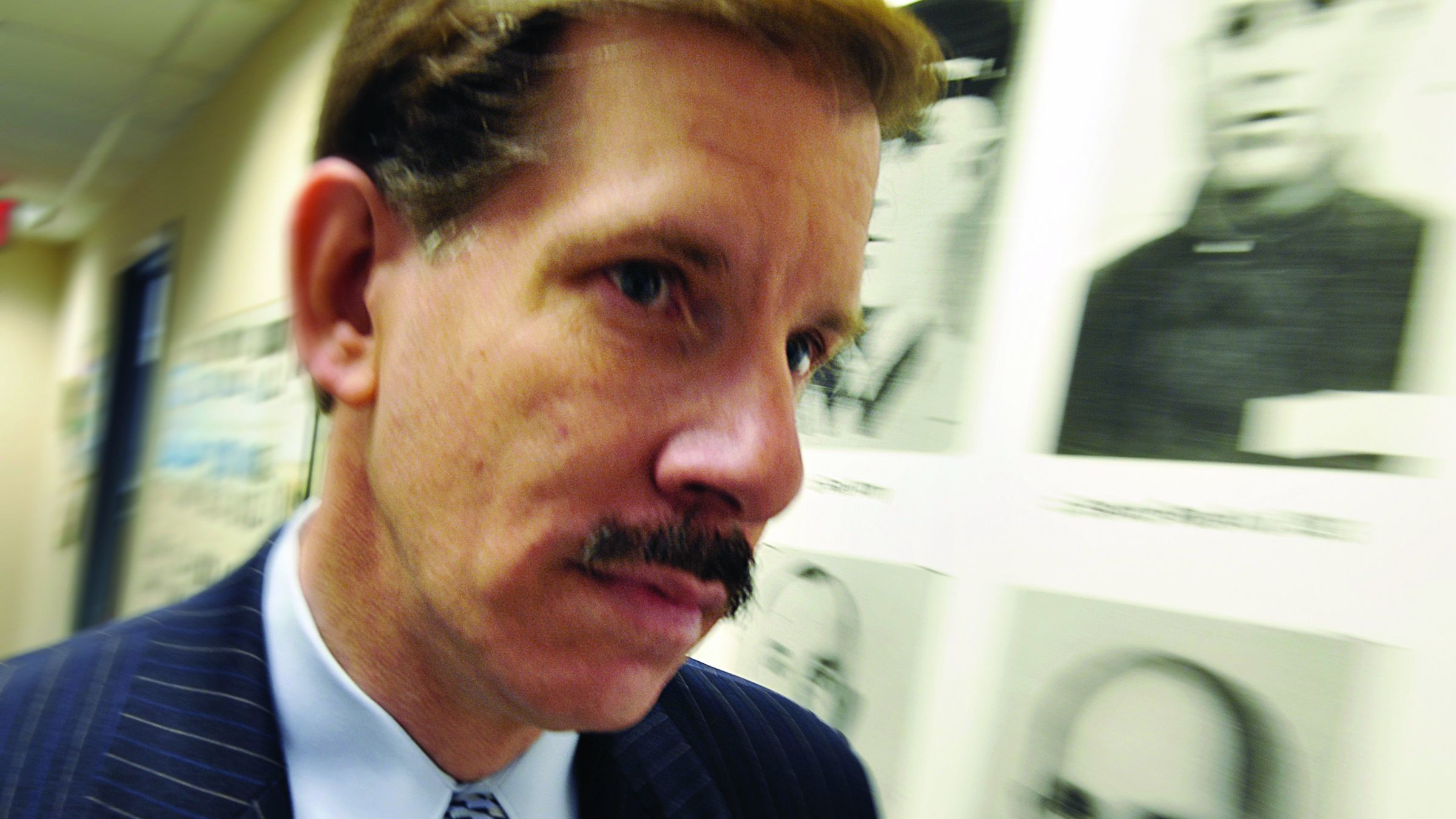
As proud descendants of the D’Arcy Hutton who fought with William the Conqueror at The Battle of Hastings, our family have been warriors and clergy in England and abroad right down to today. I do wish my grandfather Frank Leslie shutting could have met Mad Jack Churchill. They were kindred spirits in so many ways. Adventurers, warriors and well respected by their fellows. After bringing a string of Hackney ponies from England to America for his older brother at Marske Hall, he decided to stay here and was soon a member of then in command of the Mounted NY State Police. He took his unit to join Black Jack Pershing in the US incursion into Mexico to hunt down Pancho Villa after he had crossed the border and attached towns on our side. Later my grandfather joined the American Army to join his fellow English brothers and the
French in the deadly trench warfare in France. Many stories of his exploits after returning to the States are well known in our family. And my dad followed him to battle in North Africa and Italy in WWII. But he had a soulmate he sadly never knew in Jack Churchill. Since they have both passed on they may have met over fine Scotch to share stories of days gone by when exploits like theirs were more common than in today’s world.
This story of Mad Jack Churchill is well written and gets my English blood up to encourage my 10 year old son to continue our own family’s tradition in years to come. ( I can see our ancestor’s in him already!) thank you so much for allowing me to write these comments.
I was at Christie’s the Fine Art Auctioneers in the late 1960s and 1970s when Jack Churchill used to bring in his scale model boats that he had made for sale at auction, and he very kindly used to ask me to join him for lunch ,often in the company of an old friend of his “Wings” Day one of the first RAF officers , I believe captured by the Germans in WW2 . The lunches were always fun. He was awarded a Medal by Tito some considerable time after the War and travelled to Yugoslavia to receive it. He also mentioned that he had kept in touch long after the War with the Widow of a Senior German Officer whom he tried to save from execution by the Partisans as he had been treated fairly at the time. A most exceptional Officer and Gentleman